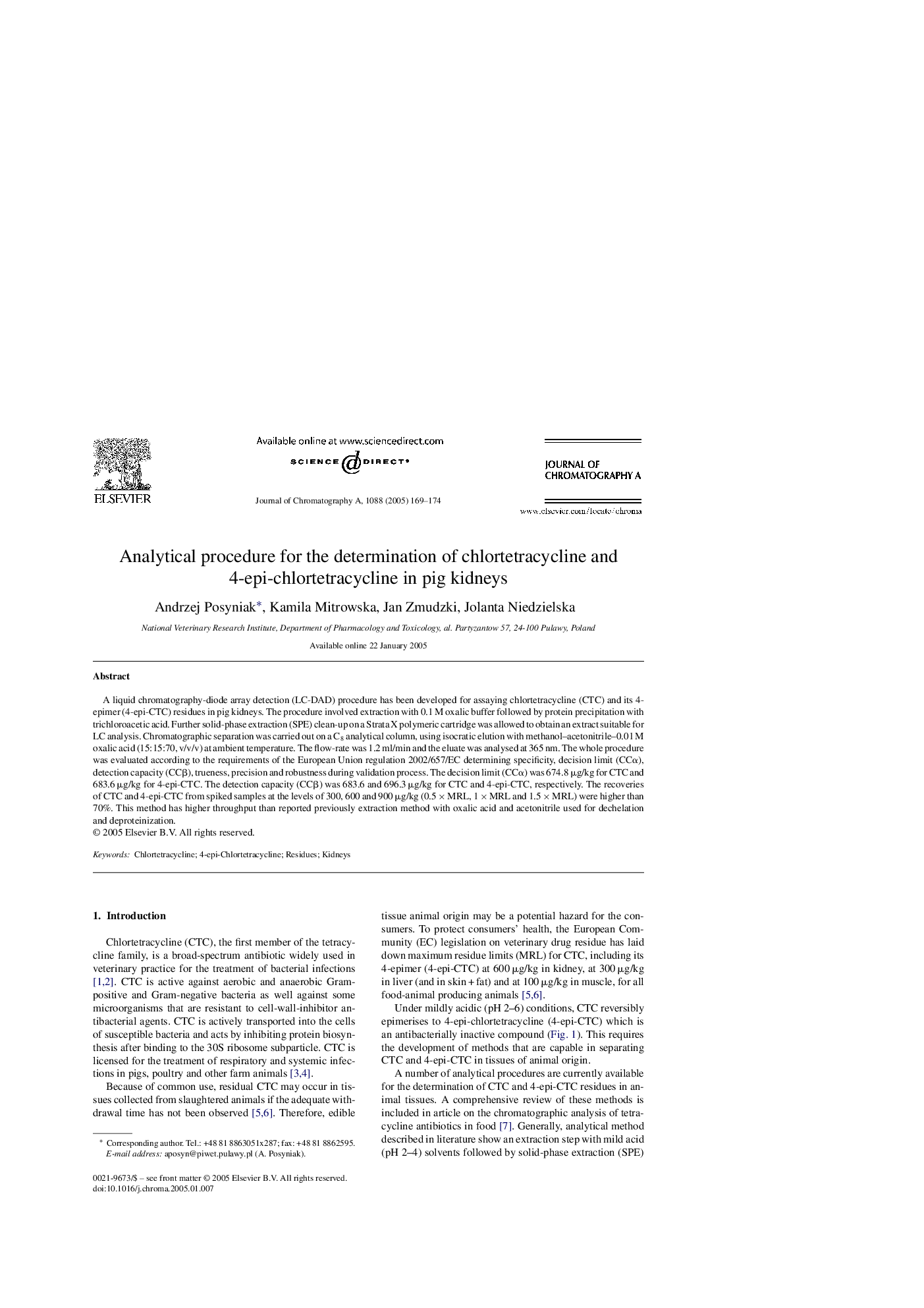| Article ID | Journal | Published Year | Pages | File Type |
|---|---|---|---|---|
| 9748767 | Journal of Chromatography A | 2005 | 6 Pages |
Abstract
A liquid chromatography-diode array detection (LC-DAD) procedure has been developed for assaying chlortetracycline (CTC) and its 4-epimer (4-epi-CTC) residues in pig kidneys. The procedure involved extraction with 0.1 M oxalic buffer followed by protein precipitation with trichloroacetic acid. Further solid-phase extraction (SPE) clean-up on a Strata X polymeric cartridge was allowed to obtain an extract suitable for LC analysis. Chromatographic separation was carried out on a C8 analytical column, using isocratic elution with methanol-acetonitrile-0.01 M oxalic acid (15:15:70, v/v/v) at ambient temperature. The flow-rate was 1.2 ml/min and the eluate was analysed at 365 nm. The whole procedure was evaluated according to the requirements of the European Union regulation 2002/657/EC determining specificity, decision limit (CCα), detection capacity (CCβ), trueness, precision and robustness during validation process. The decision limit (CCα) was 674.8 μg/kg for CTC and 683.6 μg/kg for 4-epi-CTC. The detection capacity (CCβ) was 683.6 and 696.3 μg/kg for CTC and 4-epi-CTC, respectively. The recoveries of CTC and 4-epi-CTC from spiked samples at the levels of 300, 600 and 900 μg/kg (0.5 Ã MRL, 1 Ã MRL and 1.5 Ã MRL) were higher than 70%. This method has higher throughput than reported previously extraction method with oxalic acid and acetonitrile used for dechelation and deproteinization.
Keywords
Related Topics
Physical Sciences and Engineering
Chemistry
Analytical Chemistry
Authors
Andrzej Posyniak, Kamila Mitrowska, Jan Zmudzki, Jolanta Niedzielska,
